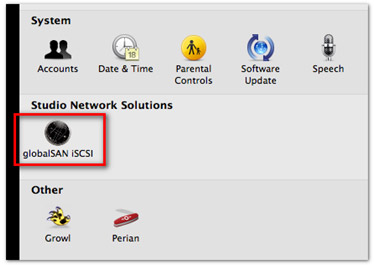

- #GLOBALSAN ISCSI 0.6.7 INSTALL#
- #GLOBALSAN ISCSI 0.6.7 PASSWORD#
Select one or more iSCSI LUNs, and then click Create Pool. Click Create a new pool and storage space. For older Windows versions you must use Disk Management. Under Target Secret, specify the CHAP password.įormat the connected LUN as a disk in Windows.įor this guide, we will be using Windows 10. Under Name, specify the CHAP username. Select a target in the Discovered Targets List. #GLOBALSAN ISCSI 0.6.7 PASSWORD#
You must specify the CHAP username and password to connect. If you configured CHAP authentication on the NAS, then the target will have the status Inactive. Optional: Add CHAP authentication credentials to the target. ISCSI Initiator searches for available iSCSI targets and adds them to the Discovered Targets list. Optional: Click Yes if Windows prompts you to start the iSCSI service.Įnter the NAS IP address under Targets > Target and then click Quick Connect Depending on your Windows version, you can search for it in the Windows program search or find it at Control Panel” > Administrative Tools. In Windows, locate and run iSCSI Initiator.
#GLOBALSAN ISCSI 0.6.7 INSTALL#
You can download and install it on Windows 2003, Windows XP and Windows 2000. Microsoft iSCSI Initiator is built into all versions of Windows, starting from Windows Vista and Windows Server 2008. Connecting to an iSCSI target using globalSAN iSCSI initiator in Mac OSĬonnecting to an iSCSI target using Microsoft iSCSI initiator in Windows.Connecting to an iSCSI target using Microsoft iSCSI initiator in Windows.You could follow the below steps to connect to the LUN on the NAS from your Mac or Windows PC:
 Secured login and multi-factor authentication. Support Milestone Surveillance Platform. NAS Smart Surveillance System Solutions. NDR Solutions against Targeted Ransomware. Software-defined Platform Total Solution. Support Platform9’s Managed OpenStack Solution. Veeam-Ready and Virtualization Certifications. Management center for device and user permission. With Linux and ZFS, QuTS hero supports advanced data reduction technologies for further driving down costs and increasing reliablility of SSD (all-flash) storage. QuTS hero is the operating system for high-end and enterprise QNAP NAS models. WIth Linux and ext4, QTS enables reliable storage for everyone with versatile value-added features and apps, such as snapshots, Plex media servers, and easy access of your personal cloud. QTS is the operating system for entry- and mid-level QNAP NAS.
Secured login and multi-factor authentication. Support Milestone Surveillance Platform. NAS Smart Surveillance System Solutions. NDR Solutions against Targeted Ransomware. Software-defined Platform Total Solution. Support Platform9’s Managed OpenStack Solution. Veeam-Ready and Virtualization Certifications. Management center for device and user permission. With Linux and ZFS, QuTS hero supports advanced data reduction technologies for further driving down costs and increasing reliablility of SSD (all-flash) storage. QuTS hero is the operating system for high-end and enterprise QNAP NAS models. WIth Linux and ext4, QTS enables reliable storage for everyone with versatile value-added features and apps, such as snapshots, Plex media servers, and easy access of your personal cloud. QTS is the operating system for entry- and mid-level QNAP NAS.






 0 kommentar(er)
0 kommentar(er)
